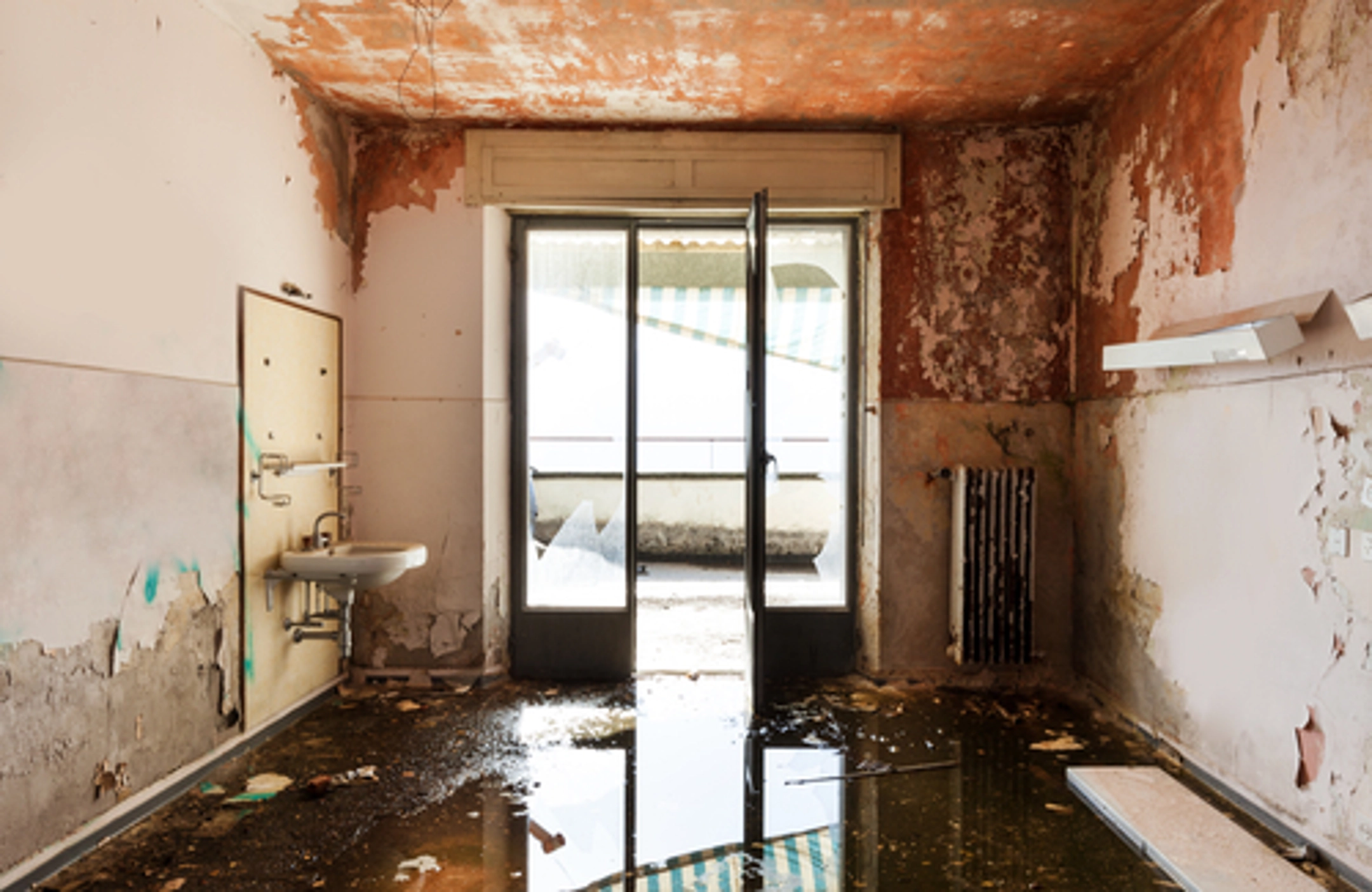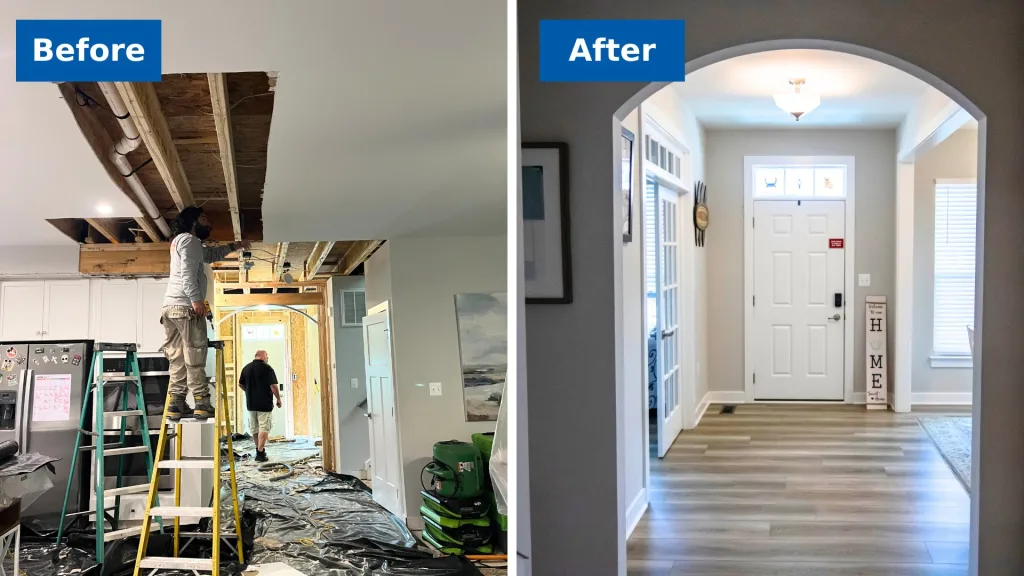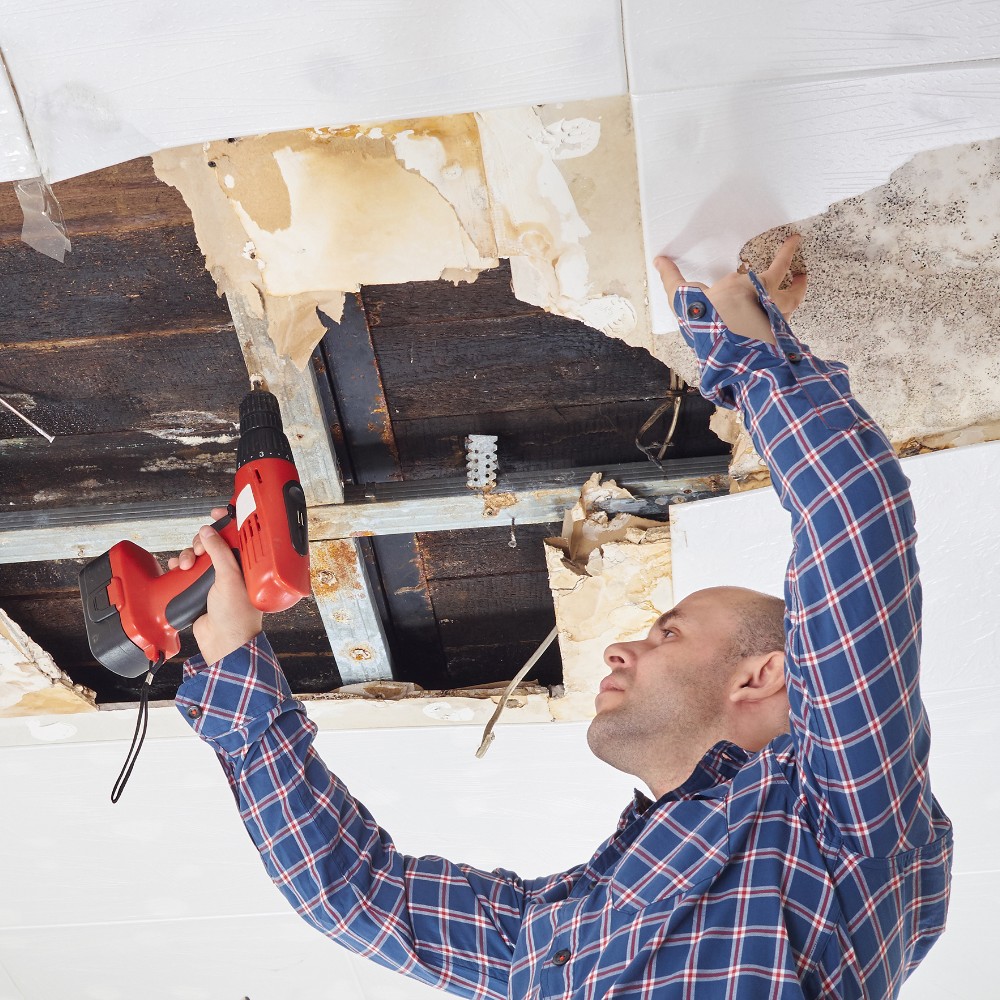How Water Damage Repair Prevents Long-Term Structural Failure
Important Actions to Adhere To for Efficient Water Damages Repair in Your Home
When confronted with water damages in your home, recognizing the important steps for reliable remediation can make all the distinction. You need to evaluate the damage and warranty security before taking on the problem. Quiting the source of water is necessary, however it's simply the beginning. As soon as you've taken care of that, there's a series of activities you should require to safeguard your residential property from additional concerns. Allow's discover what you need to do next.
Assess the Damage
When you uncover water damage in your home, the initial step is to assess the damage extensively. Begin by determining the source of the water breach. Examine for leaks, ruptured pipes, or other problems creating the issue. Next, examine the impacted locations for noticeable indications of damages, consisting of bending, discoloration, or mold development. Don't fail to remember to look in covert areas like behind wall surfaces or under floor covering, as water can permeate right into these locations unnoticed.Document the damages by taking clear images and notes. This will certainly aid you when talking about the circumstance with your insurance coverage provider or restoration professionals. Take note of the type of materials affected, as different materials require various reconstruction approaches. Finally, evaluate the level of the damages. Is it minor or comprehensive? Understanding the scope will guide you in deciding whether to handle it on your own or call in the experts for a more comprehensive repair procedure.

Make sure Safety and security
Before you start any type of repair job, assuring your safety and security is important. First, examine the problem of your home. If the water's deep or if you observe electric threats, do not get in the location. Switch off the electricity and gas supply to avoid mishaps. Put on safety equipment like handwear covers, boots, and masks to shield yourself from pollutants or mold.It's essential to stay knowledgeable about your surroundings; watch for sharp objects and unsafe surfaces. If the water is from a sewage backup, treat it as contaminated materials. Maintain youngsters and animals far from influenced locations to avoid exposure.Once you've taken these preventative measures, you can continue with the remediation process. Keep in mind, your safety and security comes initially, and if you're ever before uncertain, it's finest to seek advice from an expert. Taking these steps will help assure you prepare to tackle the restoration safely and properly.
Quit the Source of Water
After guaranteeing your safety and security, the following step is to stop the resource of water. Identify where the leak is originating from. It can be a ruptured pipe, a malfunctioning home appliance, and even hefty rainwater entering with a damaged roof. If it's a pipes concern, shut off the primary water supply to your home to stop additional flooding. For appliances, unplug them and close off their water valves.If the source is outside, like rainwater, try to divert it away from your home utilizing sandbags or various other barriers. For small leaks, you could be able to use tape or a sealer momentarily until an expert can fix it. Remember, addressing the source promptly is important to reducing damages and preventing mold development. When you have actually stopped the water, you'll remain in a far better setting to move on to the next actions in the remediation process.

Eliminate Excess Water
Act rapidly to get rid of excess water, as standing water can result in more extensive damage and mold growth. Collect your devices: a wet/dry vacuum, buckets, and towels. You can make use of towels to saturate up the dampness if the water is superficial. For much deeper water, a wet/dry vacuum is your best option. See to it to clear the vacuum cleaner often to avoid overflow.If the water is polluted, like from a sewer backup, wear protective gear, including handwear covers and masks, to keep on your own risk-free. Once you have actually eliminated as much water as possible, look for hidden pockets of moisture in edges and under furniture, as these can nurture mold.Don' t forget to transform off electric home appliances and power outlets in damp areas to avoid dangers. This initial step is crucial in decreasing damage and establishing the stage for a successful restoration process.
Dry and Dehumidify the Location
When you've gotten rid of the excess water, it's necessary to dry and dehumidify the area extensively. Beginning by using dehumidifiers successfully to draw moisture out of the air and protect against mold growth. Maintain an eye on humidity levels to assure the room dries out totally.
Get Rid Of Standing Water
To effectively tackle water damage, you need to concentrate on eliminating standing water as swiftly as possible. Beginning by gathering necessary tools, like a wet/dry vacuum or a pump, depending upon the read this article volume of water. If the water is shallow, a vacuum cleaner ought to suffice. For larger quantities, a pump is extra efficient. While functioning, make certain to wear my website protective equipment to maintain yourself secure from contaminants. As you get rid of the water, take note of hidden locations like under furnishings or in edges where water might accumulate. When you have actually eliminated the bulk, your room will certainly start to dry out. This action is crucial, as remaining water can result in mold and mildew development and extra considerable damage.
Use Dehumidifiers Efficiently
Exactly how can you properly make use of dehumidifiers to completely dry and evaporate your space? Start by putting your dehumidifier in the most damaged location, ideally where water damage is most severe. Make certain to shut all doors and home windows to produce a closed atmosphere. Switch on the dehumidifier and established it to the proper humidity degree, usually around 30-50%. Vacant the water collection tank frequently, or consider making use of a version with a continual drainage option for convenience. Preferably, utilize fans to improve air movement, aiding the dehumidifier work more efficiently. Maintain the dehumidifier running up until you're certain that the location is completely dried out, preventing mold and mildew growth and extra damage (Water Damage Restoration St George UT). This action is necessary for efficient water damages reconstruction
Display Humidity Levels
Surveillance humidity degrees is important throughout the drying out procedure, as it helps assure your space stays devoid of excess dampness. Invest in a reliable hygrometer to track humidity precisely. Preferably, you intend to preserve levels between 30% and 50%. If humidity readings increase over this range, you may need to change your dehumidifiers or followers to boost air flow. Check the readings routinely, especially in areas vulnerable to wetness, like cellars or shower rooms. If you notice persistent high humidity, think about boosting ventilation or using extra dehumidifiers. Remaining on top of these degrees not just speeds up the drying procedure yet likewise avoids mold and mildew development, ensuring your home keeps comfortable and safe.
Tidy and Disinfect Affected Surfaces

Bring back and Repair Your Home
After cleansing and decontaminating the affected locations, it's time to recover and fix your home. Begin by evaluating the damage. Look for architectural issues, like weakened floors or walls, and address any required repair services. Replacing damaged drywall or flooring is vital for both appearances and safety.If your furnishings or valuables were impacted, consider whether they can be recovered or need replacement. Tidy or properly bring back items where possible.Next, paint walls and touch up any kind of areas that need attention. This not just improves appearance yet likewise safeguards surface areas from future water damage.Don' t forget to examine your plumbing and devices for leakages, making sure Go Here whatever's operating appropriately. Finally, think about installing a dehumidifier to stop future moisture problems. By taking these steps, you'll restore your home to its former magnificence and create a much safer living setting.
Regularly Asked Inquiries
The Length Of Time Does Water Damages Restoration Normally Take?
Water damages repair typically takes anywhere from a couple of days to numerous weeks, depending on the extent of the damage (Flood Damage Restoration). You'll intend to analyze the circumstance swiftly to lessen more issues and ensure appropriate repair
Will My Insurance Coverage Cover Water Damage Restoration Costs?
Your insurance could cover water damages remediation costs, yet it relies on your plan. Inspect your coverage details and call your insurance policy agent to clarify what's consisted of and what you need to file a case.
Can I Manage Water Damages Repair Myself?
You can take care of water damages reconstruction on your own, however it's essential to examine the situation. You could want to call specialists if it's comprehensive. Constantly focus on security and assure you have actually got the right tools.
What Are the Indicators of Hidden Water Damages?
You may notice signs of surprise water damages like warped walls, stuffy odors, or discoloration. If your floors feel spongy or you area mold, it's time to explore further prior to the situation gets worse.
Exactly How Can I Protect Against Future Water Damages in My Home?
To avoid future water damages in your home, you must on a regular basis examine pipes, seal cracks, maintain gutters, and guarantee proper drainage. Setting up a sump pump and moisture barriers can also help keep your space dry. When you find water damage in your home, the first step is to assess the damages thoroughly. Act rapidly to remove excess water, as standing water can lead to more comprehensive damage and mold development. To properly deal with water damage, you require to concentrate on eliminating standing water as swiftly as possible. As you get rid of the water, pay focus to concealed areas like under furniture or in corners where water may accumulate. Water damages reconstruction usually takes anywhere from a couple of days to numerous weeks, depending on the level of the damages.